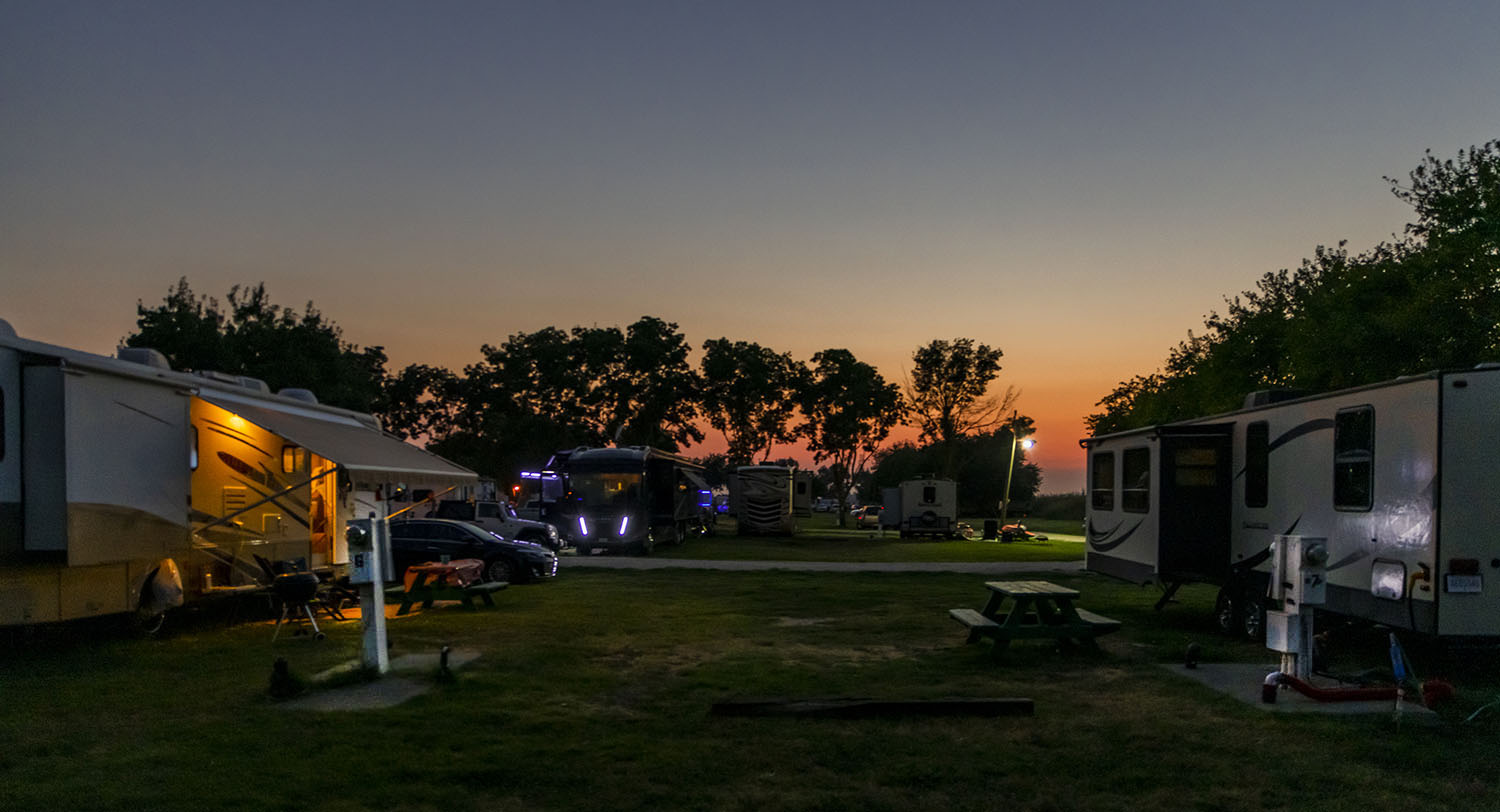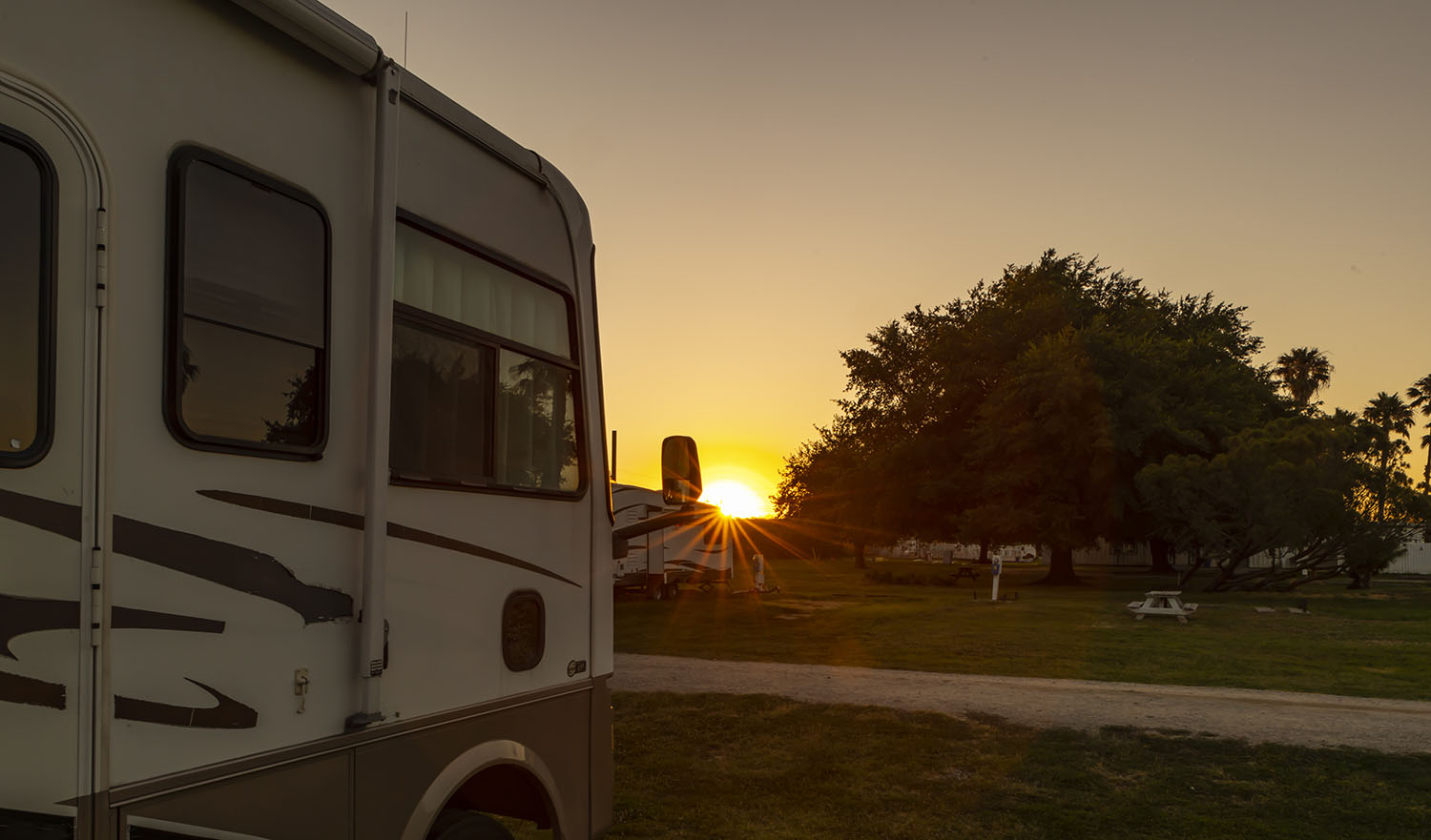WEnRV travel news, products, and industry trends
Making RV Park Reservations and Checking In Like a Pro
Can’t wait to hit the road? Not so fast. Whether you plan a winter trip in the Sun Belt or a springtime journey north, it’s important to cover all the bases when it comes to making reservations and checking in at an RV park.
Reservations
Researching your planned campground stay locations is a critical part of any RV trip. Once your destination is selected, you’ll need to take care as you go through the process of locking in your stay. While many RV parks offer online reservation systems, the direct telephone method gives you a chance to ask key questions. The correct information exchange can make this a perfect stay for all parties concerned.

Motorhome at campsite in Florida. Getty Images
Keep in mind that the rising popularity of the RV industry has created a high demand for campsites across North America. It’s more important than ever to act fast and take proper care to reserve the site that’s right for you.
Here are some of the steps that may help make your next camping reservation the best stay.
Reserve the Right Way
Do not delay making your camp reservations. Make and confirm them as soon as possible. Good parks can sell out quickly. Get your discounts upfront. Determine whether you’re eligible for discounts. Good Sam members, for instance, qualify for a 10 percent discount at Good Sam Parks. Many RV parks provide veterans discounts. Make sure the site you reserve accommodates the size of your RV and any slide-out configurations. Site sizes and configurations can vary. Consider a pull-through site, which accommodates longer vehicles. Also, check an online campground map (if available) to make sure your part isn’t near high-traffic areas or loud, busy highways. Check the RV park’s pet policies. Some RV parks prohibit certain breeds or pets altogether. Tell them of any pets that are traveling with you and ask what policies are currently in place.
Getty Images
Get the Right Connections
Be sure to specify the type of services you need, such as 30- or 50-amp electrical power. If your RV is equipped with a satellite TV receiver, you may wish to ask for a satellite-friendly site. Most RV parks are quite familiar with which sites do or do not have unobstructed satellite views.Confirm, Confirm, Confirm
In your in communication with the RV park, make sure they know your expected arrival time and ask what time their park office closes. If there is any chance of arriving later than anticipated, find out what instructions you need for entry. Make sure the park has your name and your mobile phone number. Be sure to confirm the total nights that you are planning to stay. Being displaced earlier than you wish can happen during high seasons in popular venues.Arriving and Checking In
Whether it is your destination campground or simply a night stop, pulling into the park is a welcome sight after a long day’s travel. After cruising at highway speeds for hours, the park road speed seems so slow as you wind your way from the entrance gate to the check-in office. Upon arrival, you must park your RV in the designated area so that traffic can easily pass to come and go. Additionally, you must leave as much room as possible for other arriving rigs as your stop here may take a while. This is especially true if other people are ahead of you checking in.

Getty Images
Shut down the engine during your check-in. This saves fuel and reduces air and sound pollution, which campers and people in the immediate area appreciate.
Got the Right Site?
During the check-in procedure, be sure to confirm your site requests, such as 50-amp service, satellite-friendly positioning, etc. If you have a towed vehicle, be sure to ask for a visitor pass to place in the windshield of the toad. Also, ask if you should uncouple from your towed vehicle in the arrival parking lot or at the site. If this is your destination venue, you may have other items on your wish list, like a lakefront location, a shady site, etc. Some camps even let you cruise the grounds and select which site you wish. This is ideal but usually only done during less busy times. However, if this is one of those times, be sure to hustle back to the office once you have made your selection, lest someone else beats you to it.
Consult the Map
When your check-in is complete and you have your site number and camp map, you are all set. Once outside and back in the driver’s seat, look at the map and orient yourself. Determine which roads to follow to best reach your site. Often, depending on the RV type and size, the back-in may be easier, or the only way, to achieve the successful docking at your site. In many cases, the check-in staff may advise preferred routing; one-way roads may eliminate the need for such instructions. Exercise caution exiting the check-in holding area. Watch for pedestrians, especially children, as they often frequent camp office/store locations for ice cream and the likes.

Getty Images
Settling In
Once at your assigned site, double-check the site number before backing in. Discovering you are in the wrong spot after completely setting up is a supreme hassle. When it comes to backing in, enlist a spotter. This can be your spouse, friend or camp neighbor. This practice may seem unnecessary, but it increases the safety of those in the area and eliminates costly unforeseen accidents. Overhead obstructions, like tree limbs, can be unseen by the driver, as can low laying hazards. The spotter also can be of use lining up with the services ports.
Be sure to place the registration card in the windshield or as directed by the campground.
Now you can get fully set up. Hook up the power, water and sewage connections. Turn on the power and water. Open only the grey valve on the sewage dump. Generally, the black tank is not emptied until it is fairly full as that vacates it best.
Now, with the RV level, the satellite dish aimed, it’s time to catch the big game. Life just doesn’t get any better.
Peter Mercer — With The RV Destination Arrival
The post Making RV Park Reservations and Checking In Like a Pro appeared first on Good Sam Camping Blog.
Copyright
© Good Sam Camping Blog


